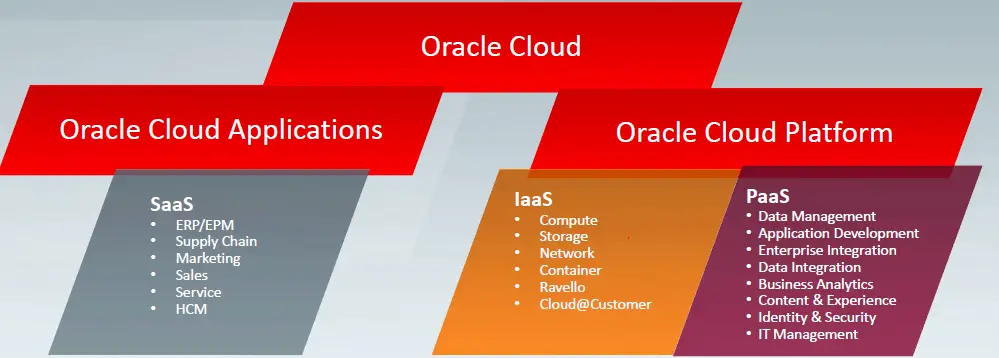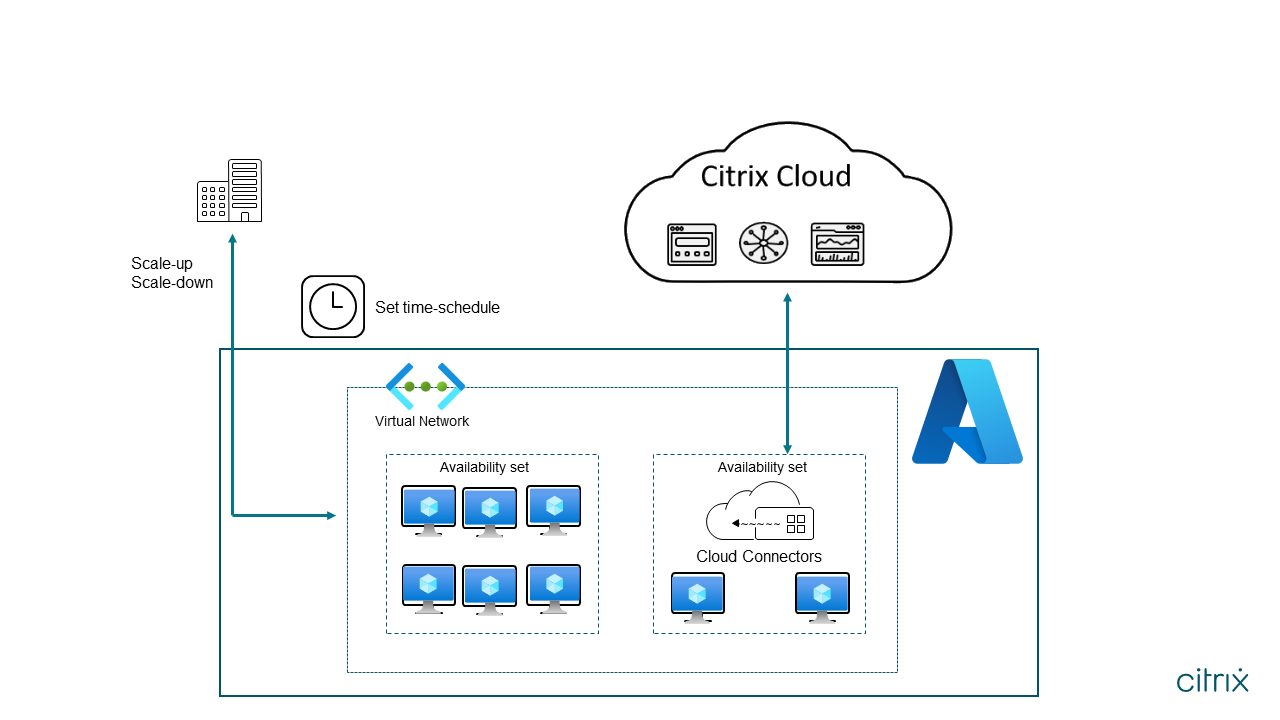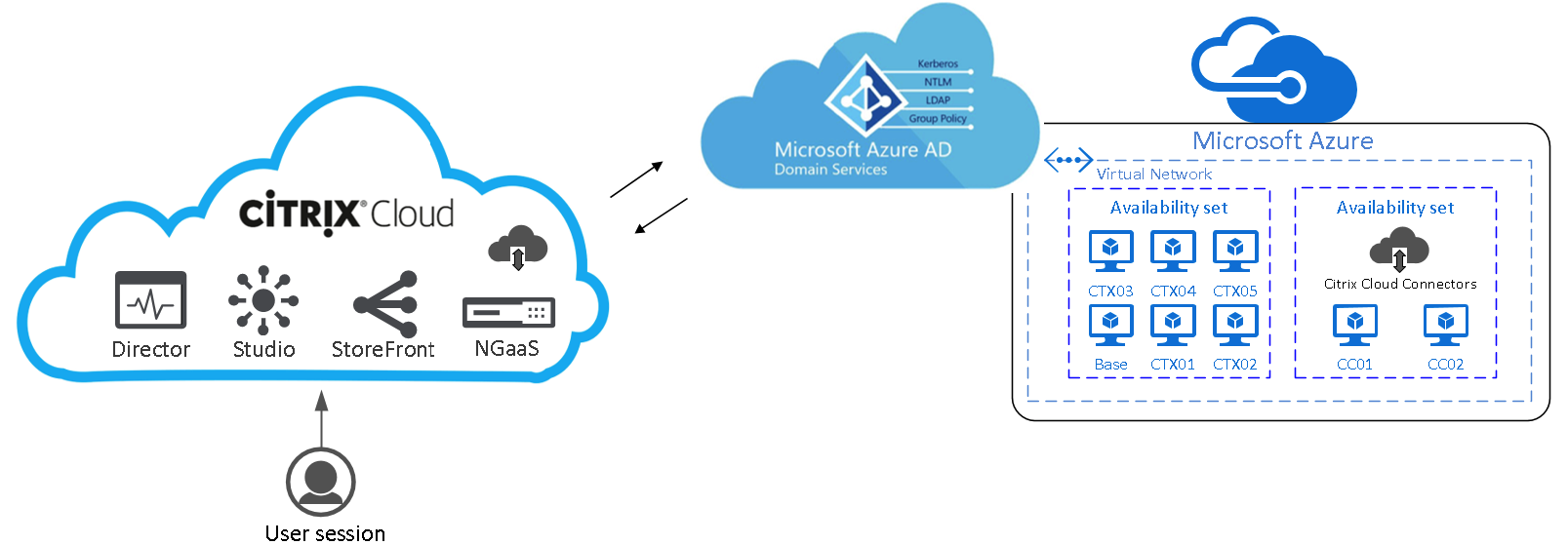- Citrix Cloud Computing
- Citrix Cloud Azure Server
- Citrix Cloud Azure Wvd
- Citrix Cloud On Azure
- Citrix Cloud Azure Certification
- Citrix Cloud Azure Locations
- Citrix Virtual Desktop Azure
In this tutorial, you learn how to integrate Citrix ShareFile with Azure Active Directory (Azure AD).Integrating Citrix ShareFile with Azure AD provides you with the following benefits:
Citrix Studio requires access to the necessary resources in the Azure tenant to be able to create, delete, modify, and manage virtual machines. These resources include resource groups, virtual networks, and storage accounts.
- You can control in Azure AD who has access to Citrix ShareFile.
- You can enable your users to be automatically signed-in to Citrix ShareFile (Single Sign-On) with their Azure AD accounts.
- You can manage your accounts in one central location - the Azure portal.
Nov 03, 2017 The architecture is quite simple, as Citrix Cloud it requres that we have an existing Azure subscription and with an existing Active Directory virtual machine running and an virtual network defined. After you have setup the connection it will deploy a Horizon Cloud Node(Node Manager) which acts as the hub between Horizon Cloud Control Plane. During Synergy Citrix also announced Azure Quick Deployment capability from the Citrix Cloud environment (more on Quick Deployment here from christiaanbrinkhoff.com). If you use quick deployment, the Citrix Cloud will automatically make the resource groups and virtual networks in Azure. The port requirement for a Citrix Cloud Resource location are as follows: Granting Access for Citrix Cloud to Access your Azure Subscirption When considering how to connect the Citrix Cloud Virtual Apps and desktops Service to the Azure subscriptions, there are 2 primary options for connecting Citrix Cloud to the Azure Subscription: 1. The Azure region you have selected does not support Citrix VDA sizes D1-13. At least one User profile associated with this Zone utilizes an unsupported VDA size.
Prerequisites

To configure Azure AD integration with Citrix ShareFile, you need the following items:
- An Azure AD subscription. If you don't have an Azure AD environment, you can get one-month trial here.
- Citrix ShareFile single sign-on enabled subscription.
Scenario description
In this tutorial, you configure and test Azure AD single sign-on in a test environment.
- Citrix ShareFile supports SP initiated SSO

Adding Citrix ShareFile from the gallery
To configure the integration of Citrix ShareFile into Azure AD, you need to add Citrix ShareFile from the gallery to your list of managed SaaS apps.
- Sign in to the Azure portal using either a work or school account, or a personal Microsoft account.
- On the left navigation pane, select the Azure Active Directory service.
- Navigate to Enterprise Applications and then select All Applications.
- To add new application, select New application.
- In the Add from the gallery section, type Citrix ShareFile in the search box.
- Select Citrix ShareFile from results panel and then add the app. Wait a few seconds while the app is added to your tenant.
Configure and test Azure AD SSO for Citrix ShareFile
In this section, you configure and test Azure AD single sign-on with Citrix ShareFile based on a test user called Britta Simon.For single sign-on to work, a link relationship between an Azure AD user and the related user in Citrix ShareFile needs to be established.

To configure and test Azure AD single sign-on with Citrix ShareFile, perform the following steps:
Configure Azure AD SSO - to enable your users to use this feature.
- Create an Azure AD test user - to test Azure AD single sign-on with Britta Simon.
- Assign the Azure AD test user - to enable Britta Simon to use Azure AD single sign-on.
Configure Citrix ShareFile SSO - to configure the Single Sign-On settings on application side.
- Create Citrix ShareFile test user - to have a counterpart of Britta Simon in Citrix ShareFile that is linked to the Azure AD representation of user.
Test SSO - to verify whether the configuration works.
Configure Azure AD SSO
Follow these steps to enable Azure AD SSO in the Azure portal.
Citrix Cloud Computing
In the Azure portal, on the Citrix ShareFile application integration page, find the Manage section and select single sign-on.
On the Select a single sign-on method page, select SAML.
On the Set up single sign-on with SAML page, click the edit/pen icon for Basic SAML Configuration to edit the settings.
On the Basic SAML Configuration section, enter the values for the following fields:
a. In the Sign-on URL text box, type a URL using the following pattern:
https://<tenant-name>.sharefile.com/saml/loginb. In the Identifier (Entity ID) textbox, type a URL using the following pattern:
https://<tenant-name>.sharefile.comhttps://<tenant-name>.sharefile.com/saml/infohttps://<tenant-name>.sharefile1.com/saml/infohttps://<tenant-name>.sharefile1.eu/saml/infohttps://<tenant-name>.sharefile.eu/saml/info
c. In the Reply URL textbox, type a URL using the following pattern:
https://<tenant-name>.sharefile.com/saml/acshttps://<tenant-name>.sharefile.eu/saml/<URL path>https://<tenant-name>.sharefile.com/saml/<URL path>
Note
These values are not real. Update these values with the actual Sign-On URL, Identifier and Reply URL. Contact Citrix ShareFile Client support team to get these values. You can also refer to the patterns shown in the Basic SAML Configuration section in the Azure portal.
On the Set up Single Sign-On with SAML page, in the SAML Signing Certificate section, click Download to download the Certificate (Base64) from the given options as per your requirement and save it on your computer.
On the Set up Citrix ShareFile section, copy the appropriate URL(s) as per your requirement.
Create an Azure AD test user
In this section, you'll create a test user in the Azure portal called B.Simon.

- From the left pane in the Azure portal, select Azure Active Directory, select Users, and then select All users.
- Select New user at the top of the screen.
- In the User properties, follow these steps:
- In the Name field, enter
B.Simon. - In the User name field, enter the username@companydomain.extension. For example,
B.Simon@contoso.com. - Select the Show password check box, and then write down the value that's displayed in the Password box.
- Click Create.
- In the Name field, enter
Citrix Cloud Azure Server
Assign the Azure AD test user
In this section, you'll enable B.Simon to use Azure single sign-on by granting access to Citrix ShareFile.
- In the Azure portal, select Enterprise Applications, and then select All applications.
- In the applications list, select Citrix ShareFile.
- In the app's overview page, find the Manage section and select Users and groups.
- Select Add user, then select Users and groups in the Add Assignment dialog.
- In the Users and groups dialog, select B.Simon from the Users list, then click the Select button at the bottom of the screen.
- If you are expecting a role to be assigned to the users, you can select it from the Select a role dropdown. If no role has been set up for this app, you see 'Default Access' role selected.
- In the Add Assignment dialog, click the Assign button.

Configure Citrix ShareFile SSO
Citrix Cloud Azure Wvd
To automate the configuration within Citrix ShareFile, you need to install My Apps Secure Sign-in browser extension by clicking Install the extension.
After adding extension to the browser, click on Set up Citrix ShareFile will direct you to the Citrix ShareFile application. From there, provide the admin credentials to sign into Citrix ShareFile. The browser extension will automatically configure the application for you and automate steps 3-7.
If you want to setup Citrix ShareFile manually, in a different web browser window, sign in to your Citrix ShareFile company site as an administrator.
In the Dashboard, click on Settings and select Admin Settings.
In the Admin Settings, go to the Security -> Login & Security Policy.
On the Single Sign-On/ SAML 2.0 Configuration dialog page under Basic Settings, perform the following steps:
a. Select YES in the Enable SAML.
b. Copy the ShareFile Issuer/ Entity ID value and paste it into the Identifier URL box in the Basic SAML Configuration dialog box in the Azure portal.
c. In Your IDP Issuer/ Entity ID textbox, paste the value of Azure Ad Identifier which you have copied from Azure portal.
d. Click Change next to the X.509 Certificate field and then upload the certificate you downloaded from the Azure portal.
e. In Login URL textbox, paste the value of Login URL which you have copied from Azure portal.
f. In Logout URL textbox, paste the value of Logout URL which you have copied from Azure portal.
g. In the Optional Settings, choose SP-Initiated Auth Context as User Name and Password and Exact.
Click Save.
Create Citrix ShareFile test user
Citrix Cloud On Azure
Log in to your Citrix ShareFile tenant.
Click People -> Manage Users Home -> Create New Users -> Create Employee.
On the Basic Information section, perform below steps:
a. In the First Name textbox, type first name of user as Britta.
b. In the Last Name textbox, type last name of user as Simon.
c. In the Email Address textbox, type the email address of Britta Simon as brittasimon@contoso.com.
Click Add User.
Note
The Azure AD account holder will receive an email and follow a link to confirm their account before it becomes active.You can use any other Citrix ShareFile user account creation tools or APIs provided by Citrix ShareFile to provision Azure AD user accounts.
Citrix Cloud Azure Certification
Test SSO
In this section, you test your Azure AD single sign-on configuration with following options.
Click on Test this application in Azure portal. This will redirect to Citrix ShareFile Sign-on URL where you can initiate the login flow.
Go to Citrix ShareFile Sign-on URL directly and initiate the login flow from there.
You can use Microsoft My Apps. When you click the Citrix ShareFile tile in the My Apps, this will redirect to Citrix ShareFile Sign-on URL. For more information about the My Apps, see Introduction to the My Apps.
Citrix Cloud Azure Locations
Next steps
Citrix Virtual Desktop Azure
Once you configure Citrix ShareFile you can enforce session control, which protects exfiltration and infiltration of your organization’s sensitive data in real time. Session control extends from Conditional Access. Learn how to enforce session control with Microsoft Cloud App Security.
